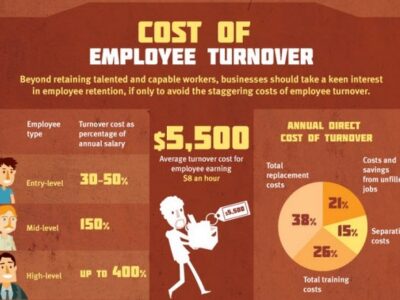In recent years, setting boundaries at work has become a big topic of discussion. People say that workplace boundaries are essential, providing numerous benefits to both employees and their employers. Some of the benefits people mention include improved well-being, enhanced productivity, and a healthier work environment.
While there are some naysayers, the truth of that matter is that workplace boundaries are essential for those who want a healthy and thriving work environment. The benefits are numerous, and they can help your business become a better place to work. Though there is nuance on the issue (forming connections is also important), it’s clear that boundaries in the workplace are necessary.
In this article, we’ll cover everything you need to know about workplace boundaries. From what they are and their importance to the benefits and how to actually set them, you’ll have all the information you need to understand and implement workplace boundaries.
Understanding Workplace Boundaries
First, let’s start by looking at what boundaries in the workplace are exactly. Though the name sounds fairly simple, it’s actually a pretty complicated topic with a lot of ins and outs. So let’s start with the basics.
In simple terms, boundaries are limits or personal rules implemented to help maintain your physical and mental wellbeing. A common example is not checking your emails after you end your work day. Another example would be not hugging coworkers, opting for a handshake or high five instead.
It’s also important to mention that there are different types of boundaries. Not checking your emails after hours would be considered a mental boundary. You know that checking emails at night isn’t good for your mental health, so you don’t do it. Not hugging coworkers would be a physical boundary, and avoiding people who are in a bad mood would be an emotional boundary.
So, why are boundaries important? What sort of impact do they actually have? If you want to implement boundaries successfully, it’s important to understand their necessity. Let’s take a closer look at the impact boundaries actually have in the workplace.
One of the first things people think about when it comes to boundaries is burn out. Most of us know what that feels like, and it’s not fun. And for employers, burn out means employees that are less motivated, efficient, and more likely to leave.
Boundaries however can help prevent burn out. Just think about the email example from earlier. When you start checking your emails late at night, it starts to blur the lines between work and life. You may find yourself more stressed and anxious about work, feeling like you just can’t get away from it.
With boundaries though, you can ensure that your time at home isn’t for work. You can create a clear separation from work and life, giving you the time and space you need to relax, decompress, destress, and be refreshed the following morning.
And that’s just an individual example. Boundaries can impact the whole team and workplace culture. For example, not gossiping with coworkers is a very common boundary in the workplace. It shouldn’t be hard to see how that can have a big impact.
When people gossip at work, it usually doesn’t end well. Rumors spread, people feel attacked, cliques start to form, etc. All that does is create divisions and rifts in the workplace, leading to people feeling left out, burnt out, stressed, and more. In turn, that can lead to lower productivity and retention.
On the flip side, setting boundaries around gossip can nip those issues in the bud. Without the gossip and drama that comes with it, employees can form better relationships, have more trust, feel more safe, and ultimately work better.
Boundaries help create a healthier, more productivity, and more positive workplace. They help keep work-life balance in check, as well as keep employees healthy mentally, physically, and emotionally.
The Art of Setting Work Boundaries
With the what and why covered, let’s move onto how to set boundaries at work. Though they are pretty simple in concept, actually setting and implementing boundaries can be a challenge for many. First, let’s start with a couple misconceptions and fears.
Many often think that setting boundaries means they can’t talk to and be friends with coworkers, but that’s not true. You can and should make connections with your coworkers. Boundaries are just there to ensure that those connections stay healthy and professional, for you and the workplace.
People also often are afraid to implement boundaries. It might feel selfish, and you don’t want to be “that person.” However, those fears are largely unfounded. It is not selfish to prioritize your own wellbeing, and boundaries benefit everyone—not just you. It may be tough at first, but people understand and see the importance of boundaries as they see the benefits of them.
With that out of the day, let’s shift to the process of setting boundaries. Setting boundaries is a very personal thing, and you’ll need to figure out what those boundaries should be. Though things like not gossiping or sending late night emails are often company wide, everyone has their own individual boundaries.
Some people want to eat their lunch alone. Others like to work alone and wear headphones to signify they want to be left alone. Many don’t want to talk much about their personal lives outside of basic information. Those are examples of personal boundaries that will vary from person to person. You need to identify the areas in which you would like boundaries.
Try going through a regular work day in your head and think about what stuff gets you stressed or impacts you negatively. Do people come up to you when you’re trying to work alone? Does your boss provide feedback in a way you don’t like? Do people constantly ask you to pick up extra work for them? That’s a good way to identify some areas in which boundaries may be necessary.
It’s also important for you to speak up and communicate. No one will know your boundaries if you never say anything about them. You have to be open, honest, and clear about your boundaries. Let others know you’ll respect their boundaries and ask that they respect yours. Communication is key when it comes to boundaries in the workplace.

Personal Boundaries in the Workplace
Though we’ve already covered a lot of ground in terms of personal boundaries in the workplace, there’s still a lot to be said. In this section, let’s cover a few more key things about boundaries like the role they play in a healthy environment and the balance between boundaries and building professional connections.
Boundaries play a huge role in creating a positive and healthy work environment. People want to feel safe, secure, and comfortable at work; boundaries can make that possible. They can help target and minimize things like gossip, toxicity, burn out, and more.
Furthermore, they can also help create professional and healthy employee connections that can drive workplace success. Developing relationships is key to creating strong teams and a positive, supportive environment. However, it’s easy for relationships to get unprofessional and create issues. Boundaries however keep those relationships in-check, ensuring they’re professional and healthy.
And as mentioned earlier, there is a balance to be found between maintaining boundaries and having connections in the workplace. It can be difficult to stick to your boundaries while collaborating with colleagues, especially on long and involved projects.
Like many things in the workplace though, clear communication can help. Make sure that you and whoever you’re working with know each other’s boundaries. Be clear about them, and respect the boundaries of those around you. This helps ensure that you can work together with your colleagues while building connections, all while avoiding the potential pitfalls workplace relationships can bring when unchecked.
How to Set Boundaries at Work: Practical Tips
To wrap up, let’s cover some practical tips and advice for setting work boundaries. Setting and enforcing boundaries is often easier said than done, but these tips should help you implement them effectively.
We’ve already said it before, but communication is key. You need to communicate your boundaries with your colleagues and supervisors. They can’t respect boundaries they don’t know about. Have an open and honest conversation about your boundaries, and be sure to respect others’ boundaries. Communication and trust can go a long way.
Another good tip is to incorporate boundaries into your daily routines. If you don’t want to deal with emails/messages after hours for example, set your status accordingly and or mute notifications after hours. Getting into the habit of doing that can reinforce your boundaries, to both you and those around you.
Lastly, consider activities, events, and trainings that can help reinforce boundaries and improve on necessary aspects like trust and communication. Team building events for example can be incredibly helpful in regards to setting and enforcing boundaries.
Bridging the Divide is an event where various teams compete to create a bridge, with everyone ultimately working towards the same goal. It can help improve team work, communication, trust, and big-picture thinking—all of which can help with boundaries.
Another example is Beat the Box. Groups tackle various escape room style challenges, helping people see their strengths and weaknesses while encouraging teamwork and effective communication. Again, this can help improve you and your team’s ability to set, enforce, and respect boundaries.
Setting Boundaries with TeamBonding
Setting boundaries in the workplace is incredibly important. Not only do they help keep employees healthy mentally, physically, and emotionally, but they can have demonstrably positive impacts on things like motivation, drive, productivity, efficiency, and more. Prioritize your own wellbeing and wellbeing of those around you by setting, enforcing, and respecting boundaries.
If you’re ready to start setting boundaries and make an improvement to your workplace, consider TeamBonding. We have been doing corporate events for over 20 years, and we have numerous events that are perfect for those looking to set boundaries. So take action today and get in touch with us today to start building a better workplace.















